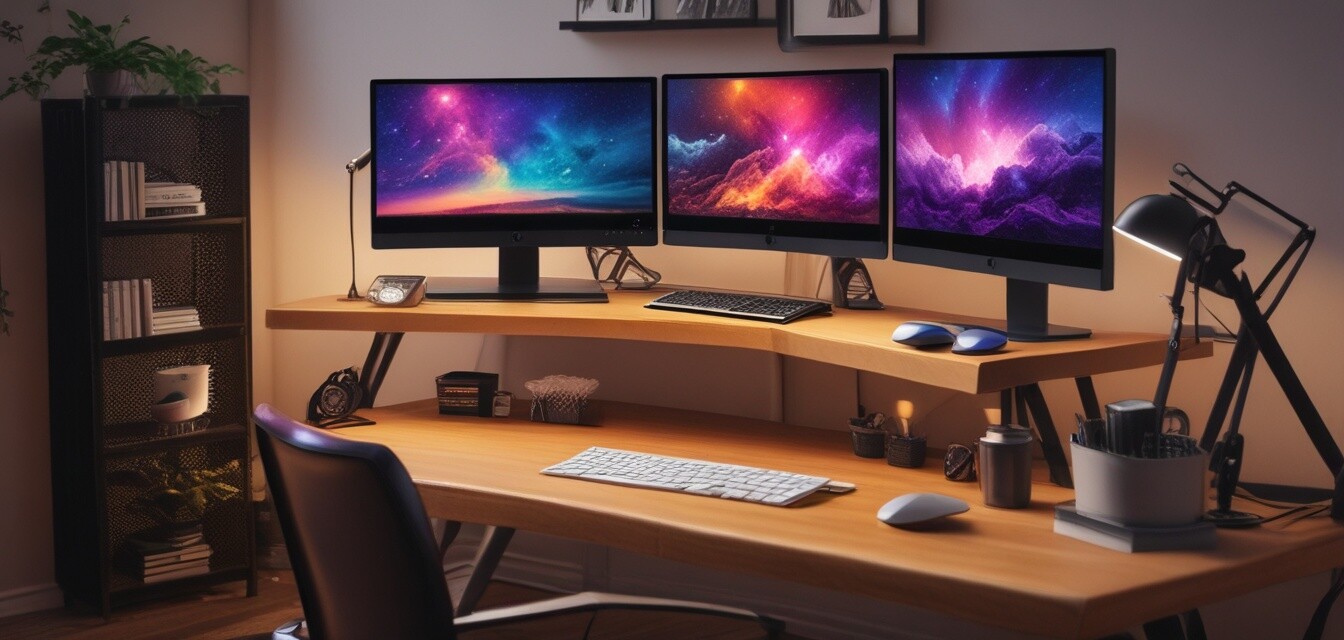
Smart Layouts for Maximizing Home Office Efficiency
Key Takeaways
- Utilize ergonomic furniture to improve comfort and productivity.
- Arrange monitors to reduce eye strain and enhance workflow.
- Incorporate natural light to boost mood and focus.
- Experiment with different layouts to find what works best for you.
- Consider effective cable management to maintain a clean space.
Your home office is more than just a place to work; it is a space where productivity, comfort, and inspiration converge. This article explores smart layouts for maximizing home office efficiency. Whether you have a spacious room or a small nook, there’s a way for you to optimize your workspace.
Choosing the Right Layout
The layout of your home office significantly influences your workflow. Here are several smart layouts suited for various workspace sizes and shapes:
| Layout Type | Best For | Key Features |
|---|---|---|
| Linear Layout | Small Spaces | Compact furniture, efficient use of wall space |
| Corner Desk Setup | Unused Corners | Maximized desk space, natural light |
| Open Workspace | Shared Spaces | Collaborative environment, flexible furniture |
| Multi-Monitor Arrangement | Heavy Computer Users | Multiple screens for enhanced productivity |
| U-Shaped Layout | Spacious Locations | Separation of work zones, increased storage |
Understanding Ergonomics
Investing in ergonomic furniture is key for a comfortable and productive workspace. Here are some elements to consider:
- Ergonomic Chair: Provides lumbar support and encourages good posture.
- Adjustable Desk Height: Allows for sitting or standing while you work.
- Monitor Arms: Frees up desk space while allowing for customizable viewing angles.
- Keyboard and Mouse Positioning: Ensures your wrists are aligned while typing, reducing strain.
Maximizing Natural Light
Light plays a critical role in an efficient workspace. Here are some tips to maximize natural light:
- Position your desk near windows to take advantage of daylight.
- Limit items that block light, like tall shelves or large plants.
- Consider using mirror decorations to reflect light around the room.
- Opt for lighter color palettes for walls and furnishings to enhance brightness.
Cable Management Solutions
A cluttered workspace can hinder productivity. Efficient cable management strategies help maintain an organized environment:
- Utilize cable clips to keep cords in place and out of sight.
- Employ cable sleeves or tubes to group cables together.
- Consider a cable management box to hide excess cords.
- Make use of furniture with built-in cable management features.
Small Space Inspiration
Small home offices don't need to compromise on style or function. Here’s how to make the most of a small area:
| Tips for Small Spaces | Benefits |
|---|---|
| Use vertical space | Maximizes storage without taking up precious floor space. |
| Choose foldable furniture | Enables versatility, allowing for quick modifications. |
| Incorporate open shelving | Provides storage while adding decorative elements. |
| Keep decor minimal | Keeps the space looking larger and more inviting. |
Conclusion
Designing an efficient home office layout involves thoughtful consideration of space, ergonomics, and personal style. By utilizing the tips and layouts detailed above, you can create a productive workspace tailored to your needs. Explore more about creating a perfect setup by checking our [Buying Guides](https://www.officetechdirect.com/blog/buying-guides) and [Setup Inspiration](https://www.officetechdirect.com/blog/setup-inspiration) sections to discover additional insights that will enhance your home office experience.
Beginner’s Tips for a Home Office Setup
- Start with a clear layout plan before purchasing furniture.
- Invest in quality over quantity when it comes to tech accessories.
- Make adjustments as needed to improve comfort over time.
- Regularly declutter your workspace to maintain efficiency.
Pros
- Enhanced productivity and focus.
- Improved comfort and reduced strain.
- Personalized workspace reflecting individual style.
- Efficient use of available space.
Cons
- Initial investment costs can be high.
- Requires ongoing maintenance and adjustments.
- Space can feel restrictive in smaller layouts.